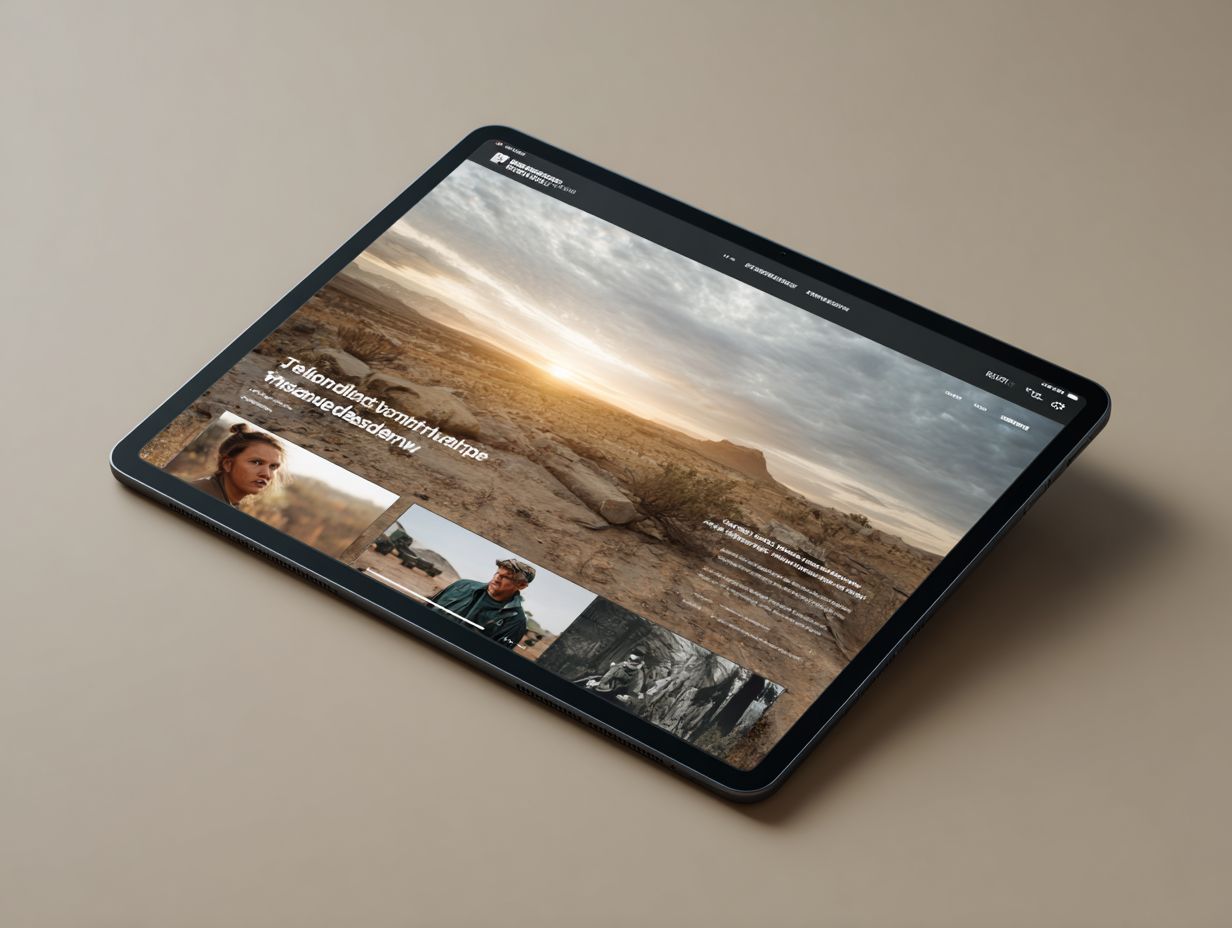Visual storytelling transforms websites into emotional journeys that captivate users and strengthen brand identity.

In a world overloaded with information, attention spans are shorter than ever. Users decide in seconds whether to stay on your website or move on. This makes first impressions incredibly important, and visuals play a crucial role in shaping that experience. Visual storytelling in web design is about using imagery, layout, color, and design elements to communicate a brand’s identity and message in a way that connects emotionally and intuitively with users.
Visual storytelling isn’t just decoration. It’s a powerful tool that can guide user behavior, build trust, and deepen engagement. A well-told visual story helps visitors understand who you are, what you offer, and why it matters—all without needing to read a single paragraph.
Humans are hardwired to respond to stories. Long before written language, storytelling was how we shared information, remembered details, and made sense of the world. Stories capture attention and make content more memorable because they engage both emotion and logic. In web design, tapping into this natural human tendency makes your content more compelling and easier to understand.
A website that tells a story visually doesn’t just inform. It immerses the user in an experience. Instead of reading about a product or service, the user sees it in action, feels the atmosphere, and gets a sense of the brand’s values and voice. This makes visual storytelling particularly effective for businesses that rely on trust, creativity, or emotional appeal—like boutique hotels, wellness brands, agencies, and artisans.
When users arrive on your website, they subconsciously ask: "Does this feel right? Is this what I’m looking for?" Visual storytelling answers these questions quickly. Color palettes, typography, image choices, and layout structure can all communicate tone, mood, and professionalism.
A visually cohesive narrative makes the site feel intentional and easy to navigate. Imagery draws the eye naturally down the page, guiding users from one section to the next. Text blocks feel more digestible when they’re paired with photos, icons, or illustrations that reinforce the message. Storytelling elements also help users remember what they saw—people may forget a line of copy, but they remember how the website made them feel.
A strong visual narrative helps simplify the browsing experience. When content is structured like a story—with a beginning (introduction), middle (key benefits or information), and end (call to action)—it creates flow. This flow reduces cognitive friction, keeping users engaged and leading them toward conversion points naturally.
People are more likely to trust a brand that feels authentic and well-presented. Visual storytelling creates this sense of authenticity by showing rather than just telling. A photo of a happy client in their new home says more than a paragraph of testimonials. A short video tour of a workspace reveals more than a bullet list of features. These visual cues allow users to judge for themselves whether a business is credible, human, and worth their attention.
High-quality imagery and clean design also signal professionalism. A poorly designed or visually inconsistent website can create doubt or confusion. On the other hand, a site with clear, thoughtful design tells users that this is a brand that cares about details—and likely cares about its customers just as much.

Successful visual storytelling relies on more than just beautiful photos. It’s about creating harmony between every design element to reinforce your message and lead users through a journey. Key components include:
The hero section (often the first thing users see) should establish the core message or emotion of the brand. It might use a powerful image, a bold headline, or even subtle motion to create a sense of place or identity. The visuals should match the brand tone—whether that’s warm and inviting, sleek and high-tech, or minimalist and serene.
Photography should be consistent in style and mood. Custom photography usually outperforms stock images because it feels more genuine and connected. If stock is used, it should be carefully curated to match the story and not feel generic.
Color schemes have psychological impact. Warm tones can feel cozy or energetic, while cool tones can feel calm and professional. Color should guide the eye, support accessibility, and reinforce emotional tone.
Typography plays a supporting role. Elegant serif fonts can suggest tradition and trust, while bold sans-serif fonts feel modern and assertive. Font choices should complement the brand personality without sacrificing readability.
Icons and illustrations add personality and clarity. They can break up dense sections, highlight key features, or represent abstract ideas in a visual form.
Microinteractions and motion can make storytelling feel more dynamic. Hover states, scroll-triggered animations, or subtle transitions help guide attention and provide visual feedback, creating a more immersive and memorable experience.
Many successful brands use visual storytelling to create impact. Apple, for instance, doesn’t just list features. It uses sleek imagery, immersive video, and thoughtful pacing to present each product as part of a lifestyle. Boutique hotels often use full-screen imagery to showcase rooms, landscapes, and guest experiences, letting users imagine themselves there before they book. Creative agencies may highlight past projects with scroll-triggered case studies that walk visitors through their process step by step.
Even simple service websites can benefit. A plumber’s site, for example, might show before-and-after photos, smiling team members, and clean equipment shots to reassure potential clients and convey reliability without saying a word.
Start by understanding your audience. What story will resonate with them? What do they care about, and how can your visuals reflect that? Build a narrative arc into your layout—begin with an emotional or aspirational message, then deliver information in layers, and end with a strong call to action.
Choose images and graphics that feel real and specific. Avoid clichés and generic stock unless it’s heavily customized. Maintain visual consistency across the site so users don’t feel disoriented. Every visual element should serve a purpose, whether it’s building mood, offering clarity, or reinforcing your message.
And finally, test your site with real users. Watch how they move through it, where they pause, what they remember. Refine your visuals based on that feedback.
In web design, emotion often matters more than information. Users won’t remember every word they read, but they’ll remember how your site made them feel. Visual storytelling is how you shape that feeling.
By aligning imagery, layout, and design choices with your brand story, you create more than a website. You create a narrative space that users want to explore, trust, and return to. And in a world full of noise, that kind of connection is your most valuable asset.
Explore Real Strategies, Trends, and Tips to Help Your Brand Grow.